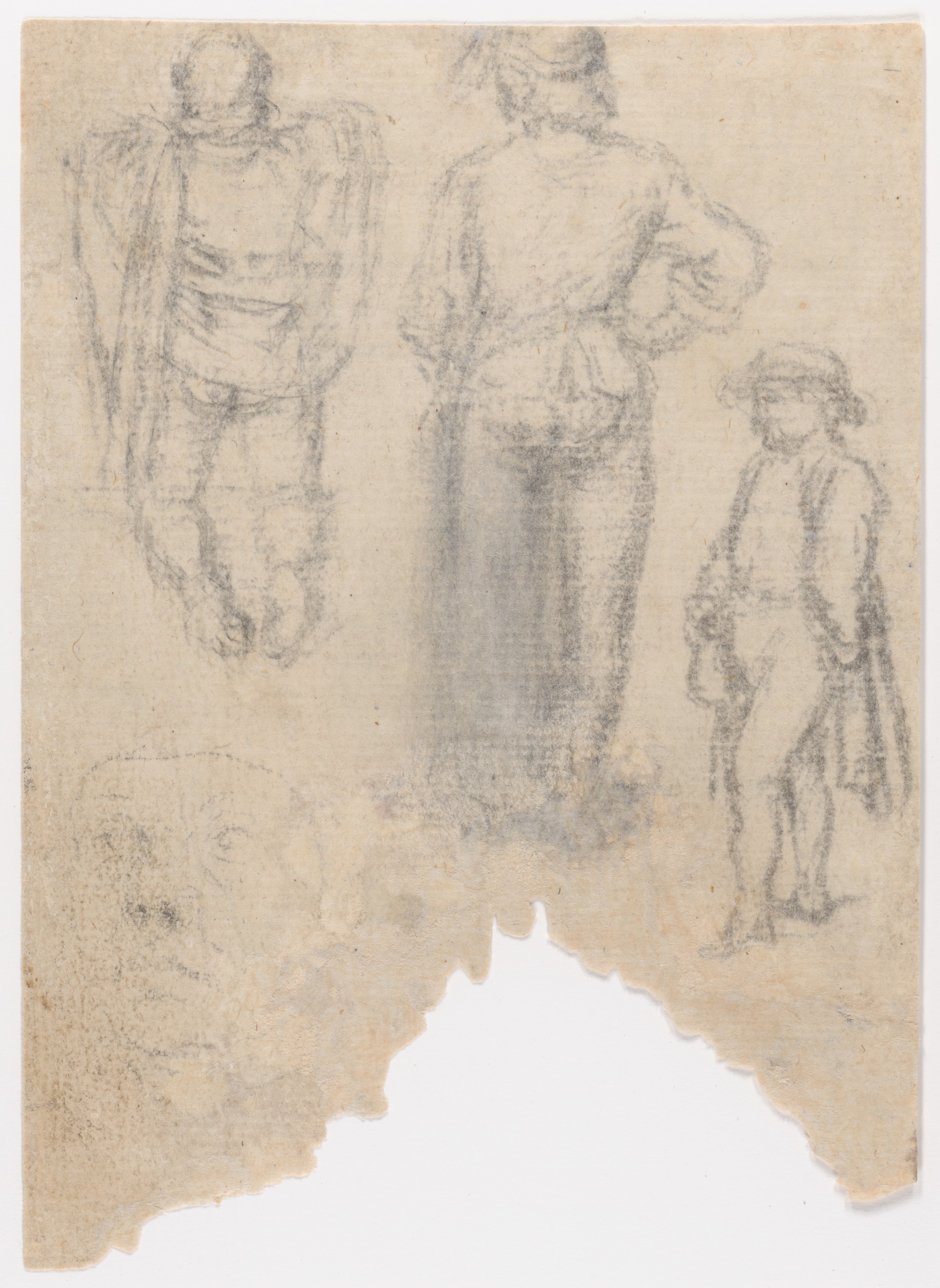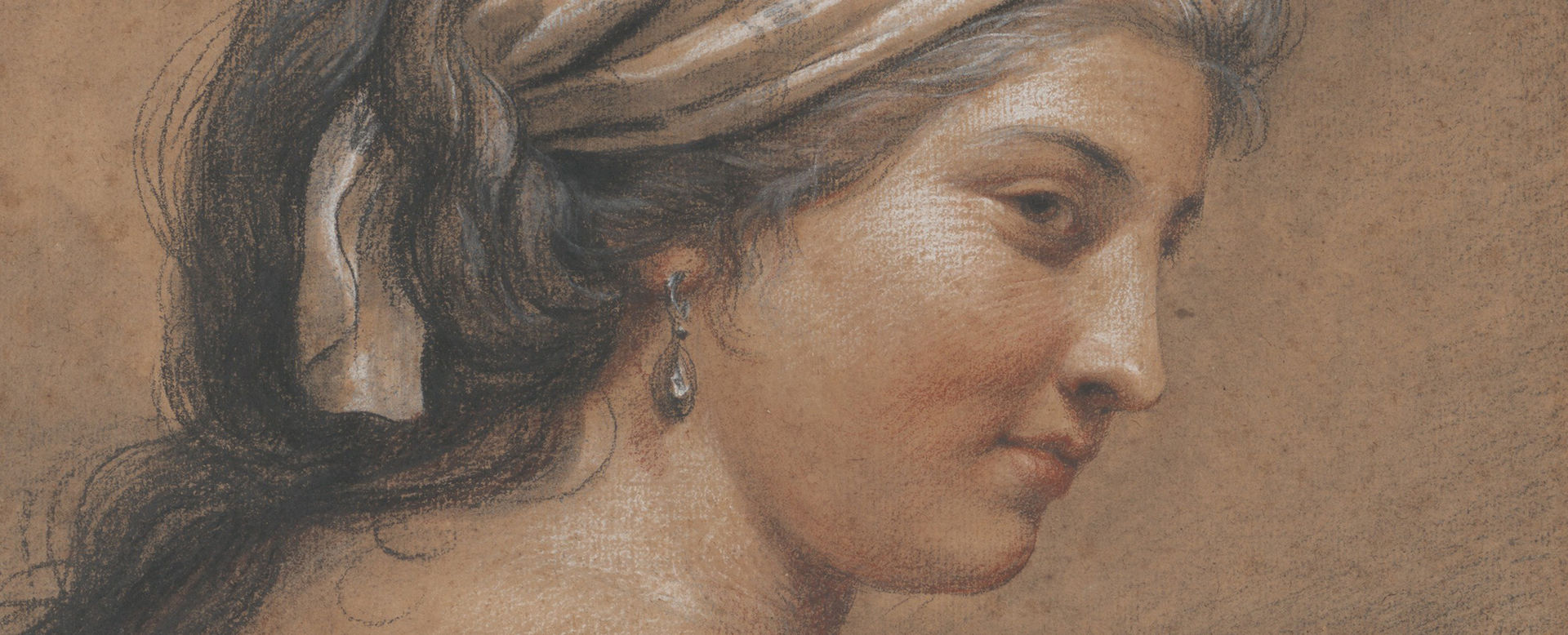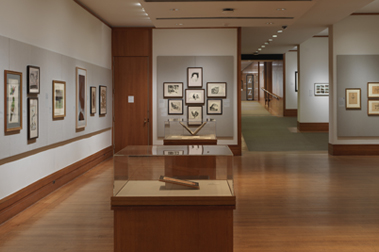Studies of ten (?) heads and two ears (recto); Studies of three figures and a head (verso)
Gerard David Netherlandish
Not on view
No more than ten drawings are known by Gerard David, the last great early Netherlandish painter, by whom there are more paintings in the Museum than in any other collection in the world. Most of David's drawings are executed in metalpoint on prepared paper. Some, like this one, are inscribed with numbers in a fifteenth- or sixteenth-century hand that probably record their original order in the sketchbook to which they must have belonged, and they show the same damage, probably caused by humidity, in the lower half of the sheet. Unlike earlier Northern artists, David used the stylus in a loose manner, and the liveliness and freshness of observation strongly suggest that this drawing was made directly from life. None of the heads appear in any of David's known paintings, but certainly it was sketches of this kind that allowed him to imbue the figures in his painted works with striking realism and profound humanity. The figure at the right in the recently discovered sketches in black chalk on the back of the sheet is preparatory to one of David's major paintings, The Flaying of the Corrupt Judge of 1498 in the Groeningemuseum, Bruges.
This image cannot be enlarged, viewed at full screen, or downloaded.
This artwork is meant to be viewed from right to left. Scroll left to view more.







